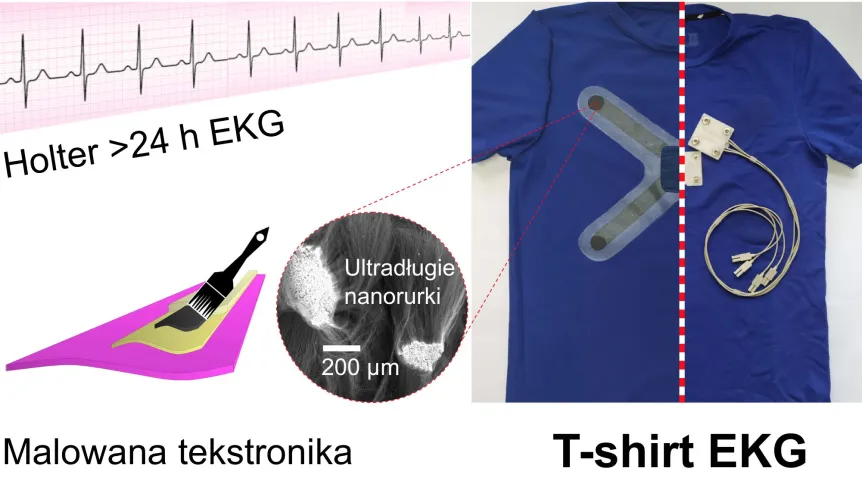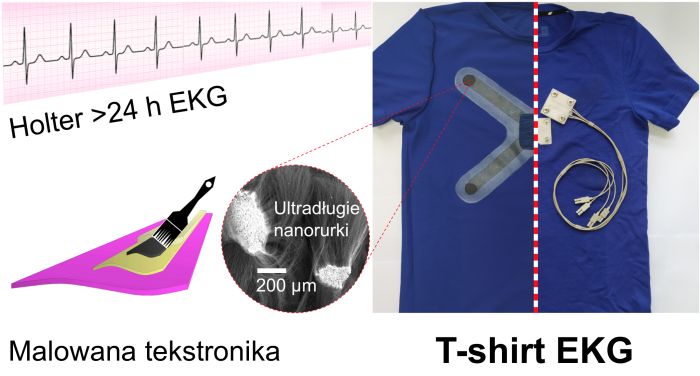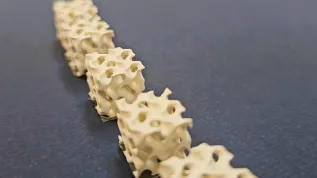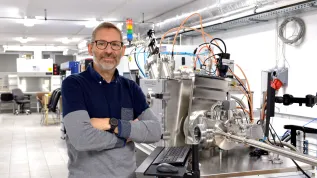
Instead of electrodes attached to the body all day, the patient wears an elastic shirt. Scientists from the Silesian University of Technology have created clothing for long-term Holter ECG heart examination. The key innovation is the synthesis of ultra-long carbon nanotubes and their integration with the polymer.
The invention is already in the clinical trials phase, says the research team leader Professor Sławomir Boncel from the Faculty of Chemistry of the Silesian University of Technology.
He says: ‘The basis of our solution is a multi-functional material. It was created from the synthesis of ultra-long carbon nanotubes with specific morphological and geometric parameters, which allowed to obtain a material that conducts electricity very well. Then the material is transformed into a conductive paste that can be printed on clothing and thus integrated with the polymer and textile.’
According to Professor Boncel, similar solutions are already available in the world, but they use conventional metals, with copper or aluminium parts being the most common conductive elements built into clothing.
In this case, the basis are the aforementioned ultra-long multi-walled carbon nanotubes, i.e. cylindrical macromolecules, consisting, at the atomic level, of seamlessly rolled graphene 'sheets' embedded in a 'tube-in-tube' system. 'They reach a length of up to several millimetres, with a diameter of several dozen nanometers, and resemble the structure of coaxial honeycombs rolled into rolls of increasing diameter,’ the chemist says.
A T-shirt with a nanotextile coating made of carbon nanotubes registers a biometric signal, for example the heart rate. 'The T-shirt was created for long-term Holter electrocardiography (ECG). The measurements are sent remotely to an application that the doctor or the patient may use', explains Professor Boncel.
The T-shirt is comfortable for the user, unlike the inconvenient, standard way of conducting this 24-hour test (patients have electrodes attached to their chests for 24 hours to monitor their heart rate and walk around with a device that collects these data).
The shirt is intended to be used by patients who need more frequent Holter examinations for health reasons. Interestingly, the T-shirt can be used many times, even after washing. 'It does not lose its conductive properties after washing, and the signal is not significantly degraded,’ Boncel says.
According to the scientist, the cost of producing such a T-shirt should not be more than 15-20 percent higher than that of a standard polyester or polyamide- that is the cost of the conductive material.
So far, several such T-shirts have been made. After preliminary tests conducted by scientists from the Silesian University of Technology, they are now in the clinical trials conducted at the Upper Silesian Medical Centre.
However, the recycling of such T-shirts remains a challenge. Professor Boncel says: ’It is a polymer shirt with conductive elements added, which unfortunately prevents us from directly recycling it. But remember that 1/3 of deaths in the world are caused by cardiovascular diseases, and electrocardiography is the least invasive diagnostic method. Therefore, I am convinced that thanks to the cooperation of chemical technologists and textile technologists, we will finally solve this problem.
'Clinical trials have recently started. The first tests were positive, and we are making various necessary adjustments as needed. If everything goes according to plan, we expect the conclusion in no more than two years.’
In the future, his team wants to check the possibility of using this type of clothing also for cardiotocography (CTG), i.e. ECG of the foetus.

PAP - Science in Poland, Agnieszka Kliks-Pudlik
akp/ bar/ kap/
tr. RL













